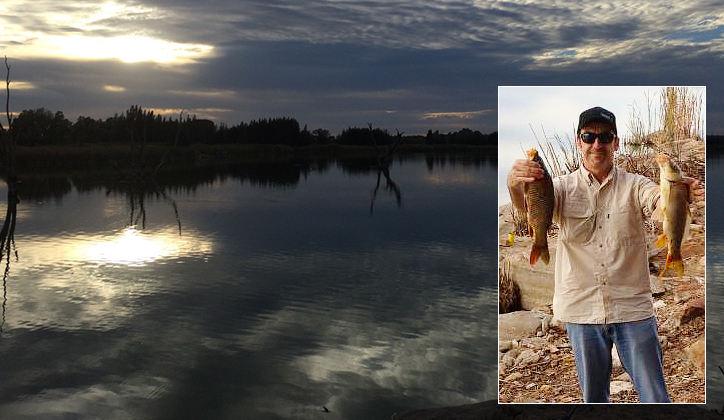Professor Gilles Guillemin has been taking samples of fish and water from Lake Wyangan as part of a research project to determine a possible link between blue-green algae and Motor Neurone Disease (MND).
“Despite the seriousness of the disease, this part of investigating a potential cause of MND is one of the more enjoyable parts of my job,” said Gilles.
“And I’m not just talking about the fishing. I value the time I have to get out of the lab and to meet with the local residents and MND patients in the area. They’ve been very welcoming to our team and if my work here can contribute to the prevention of future MND diagnoses in the area I consider these trips very worthwhile.”
The research follows on from work done by Professor Dominic Rowe and Professor Guillemin on a local MND cluster in the Griffith and Wagga Wagga area.
“A disproportionate number of people with MND live in the NSW Riverina area, so our team have been visiting over the past two years to further investigate what might be causing this phenomenon,” said Gilles.
It has been observed that people who live by lakes characterised by frequent algae blooms or consume contaminated food or water are at a higher risk of contracting MND. Gilles says blue-green algae or cyanobacteria, most often associated with nutrient runoff in coastal waters, produces a neurotoxic amino acid called β-methylamino-L-alanine, or BMAA.
Most of the Riverina is affected by blue green algae, but it is not the only possibility that the Macquarie team is investigating, they are also concomitantly looking at chemicals such as herbicides, insecticides and metals in the water.
While in some cases MND is genetic and can run in families, in the vast majority of cases the cause of MND is unknown.
“A lot of research has been done in genetic forms, but those only count for 10 per cent, so 90 per cent is sporadic. Nothing happens for no reason. If blue-green algae is a trigger we need to know what happens.”

